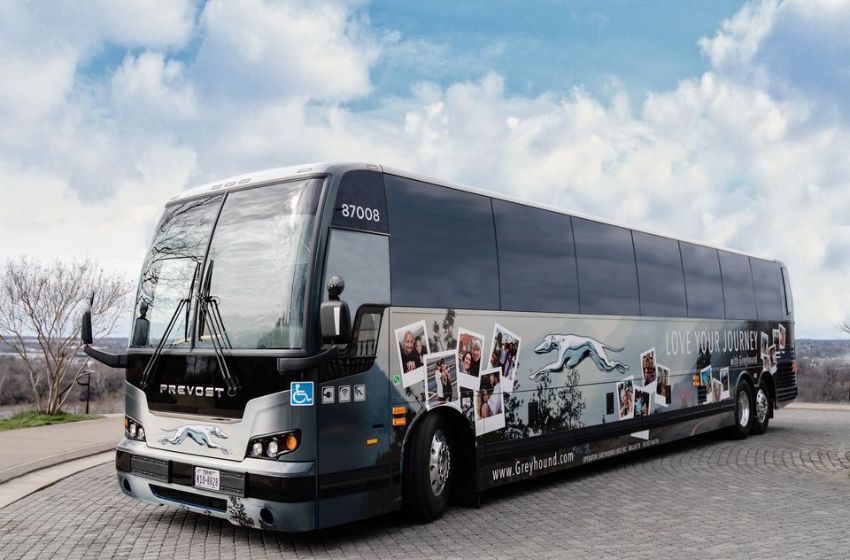Step on board the iconic Greyhound bus and embark on a journey through over a century of affordable and reliable transportation services. As the “First Bus” in North America, Greyhound has solidified its place as a staple in intercity travel, making countless memories for passengers along the way. Join us as we explore the rich history and lasting impact of this beloved brand founded by Carl Eric Wickman in 1914. Get ready to discover why Greyhound is more than just a mode of transportation – it’s an enduring symbol of adventure and connection.
Introduction
Greyhound Lines, Inc., commonly known as Greyhound, has a rich and storied history that spans over a century. From its humble beginnings as a small bus company to its evolution into one of the most recognized names in transportation, Greyhound has played a significant role in shaping the landscape of travel in North America and beyond. In this blog, we’ll delve into the fascinating legacy of Greyhound, exploring its origins, growth, innovations, and lasting impact on the world of transportation.

The Early Years: From Hound’s to Greyhound
In 1914, a young Swedish immigrant named Carl Eric Wickman started a small bus service in Hibbing, Minnesota, catering primarily to miners traveling to and from work. Initially named “Hound’s Transfer,” the company operated a rudimentary seven-passenger car that transported passengers between mining towns. Recognizing the growing demand for affordable and reliable transportation, Wickman expanded his operations, eventually rebranding the company as “Greyhound Lines” in 1926. The iconic name was inspired by the greyhounds that adorned the side of the buses, symbolizing speed, agility, and reliability.
Under Wickman’s leadership, Greyhound quickly gained popularity, offering comfortable and efficient travel at affordable rates. By the 1930s, Greyhound had become the largest bus carrier in the United States, with routes stretching across the country. The company’s distinctive silver-sided buses became a familiar sight on highways, symbolizing freedom and adventure for travelers across America.
Innovation and Expansion: Pioneering the Way
Throughout its history, Greyhound has been at the forefront of innovation in the transportation industry. In the 1930s, Greyhound introduced the first air-conditioned buses, revolutionizing long-distance travel and setting new standards for passenger comfort. The company also pioneered the development of centralized bus terminals, offering passengers a convenient and efficient way to connect between routes.
Greyhound commitment to innovation and expansion continued into the latter half of the 20th century. In 1946, the company introduced its iconic Scenicruiser buses, featuring panoramic windows and elevated rear seating for enhanced views of the passing landscape. Throughout the decades, Greyhound expanded its network of routes, connecting cities and towns across North America and providing millions of passengers with safe, reliable, and affordable transportation options.
Cultural Impact: Greyhound in Popular Culture
Over the years, Greyhound has left an indelible mark on popular culture, becoming a symbol of adventure, exploration, and freedom. The company’s distinctive buses have been featured in numerous films, television shows, and works of literature, further cementing Greyhound’s place in the public imagination. From Jack Kerouac’s iconic novel “On the Road” to classic films like “It Happened One Night” and “Speed,” Greyhound has been portrayed as a quintessential mode of American travel, embodying the spirit of the open road.
Greyhound cultural impact extends beyond the realm of entertainment, influencing music, art, and fashion. The company’s sleek and streamlined buses have inspired artists and designers, appearing in paintings, photographs, and advertisements. Additionally, Greyhound’s logo and branding have become iconic symbols of travel and adventure, evoking feelings of nostalgia and wanderlust for generations of travelers.
Adapting to Change: Greyhound in the Modern Era
n recent years, Greyhound has faced new challenges and opportunities in an ever-changing transportation landscape. With the rise of air travel and the advent of ride-sharing services, Greyhound has adapted its business model to remain competitive in the digital age. The company has embraced technology, offering online booking, mobile ticketing, and onboard Wi-Fi to enhance the passenger experience.
Despite these changes, Greyhound remains committed to its core mission of providing safe, reliable, and affordable transportation to millions of passengers each year. The company continues to expand its network of routes, modernize its fleet of buses, and invest in sustainability initiatives to reduce its environmental impact. As Greyhound looks to the future, it remains a symbol of resilience, innovation, and enduring American spirit.

Conclusion
From its humble beginnings as a small bus company to its status as a global leader in transportation, Greyhound legacy is one of innovation, expansion, and cultural significance. For over a century, Greyhound has played a pivotal role in shaping the way we travel, connecting communities, and inspiring generations of adventurers. As the company continues to adapt to changing times, its commitment to providing safe, reliable, and affordable transportation remains unwavering. Greyhound’s legacy is a testament to the enduring power of innovation, perseverance, and the spirit of exploration.



